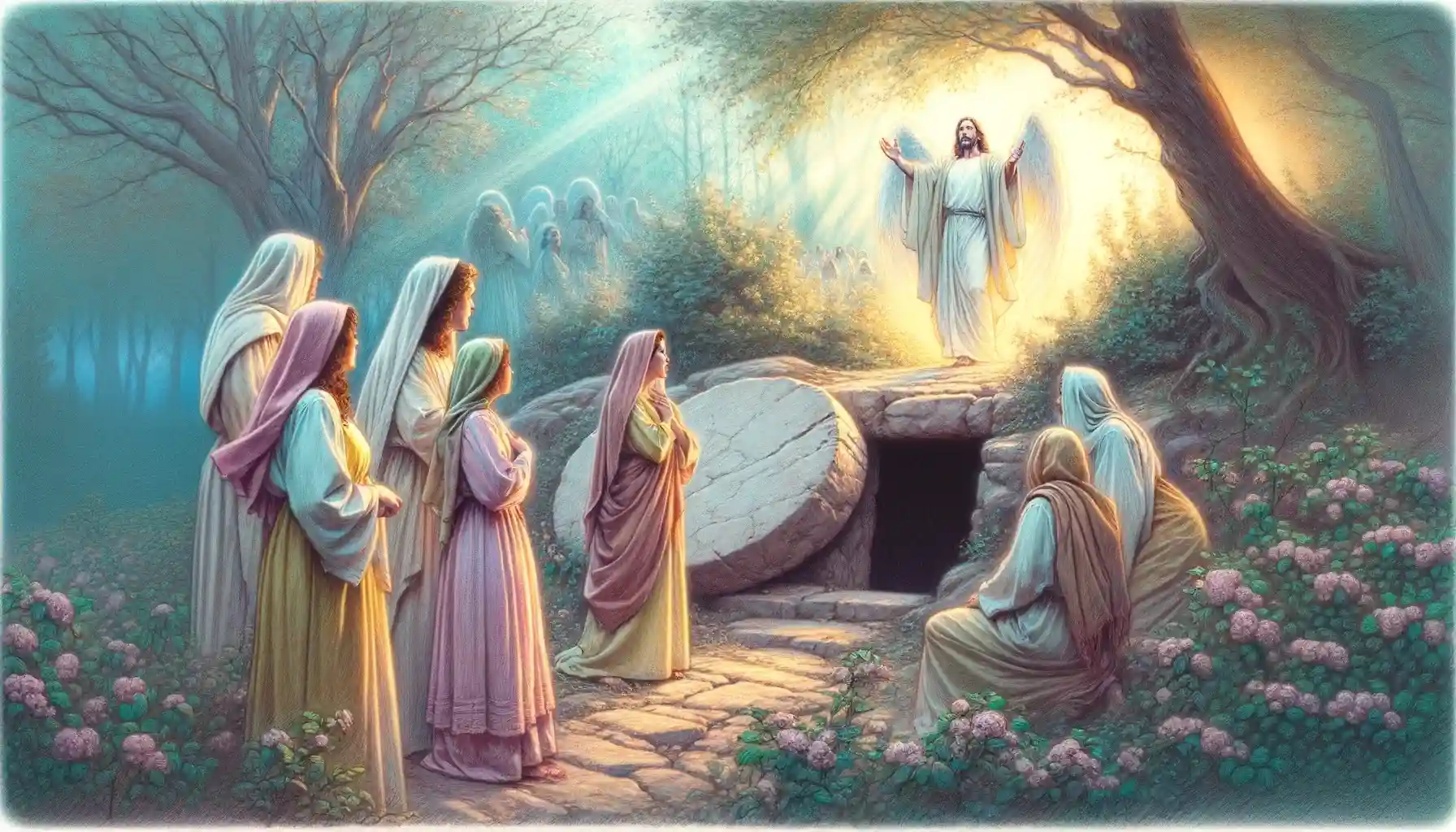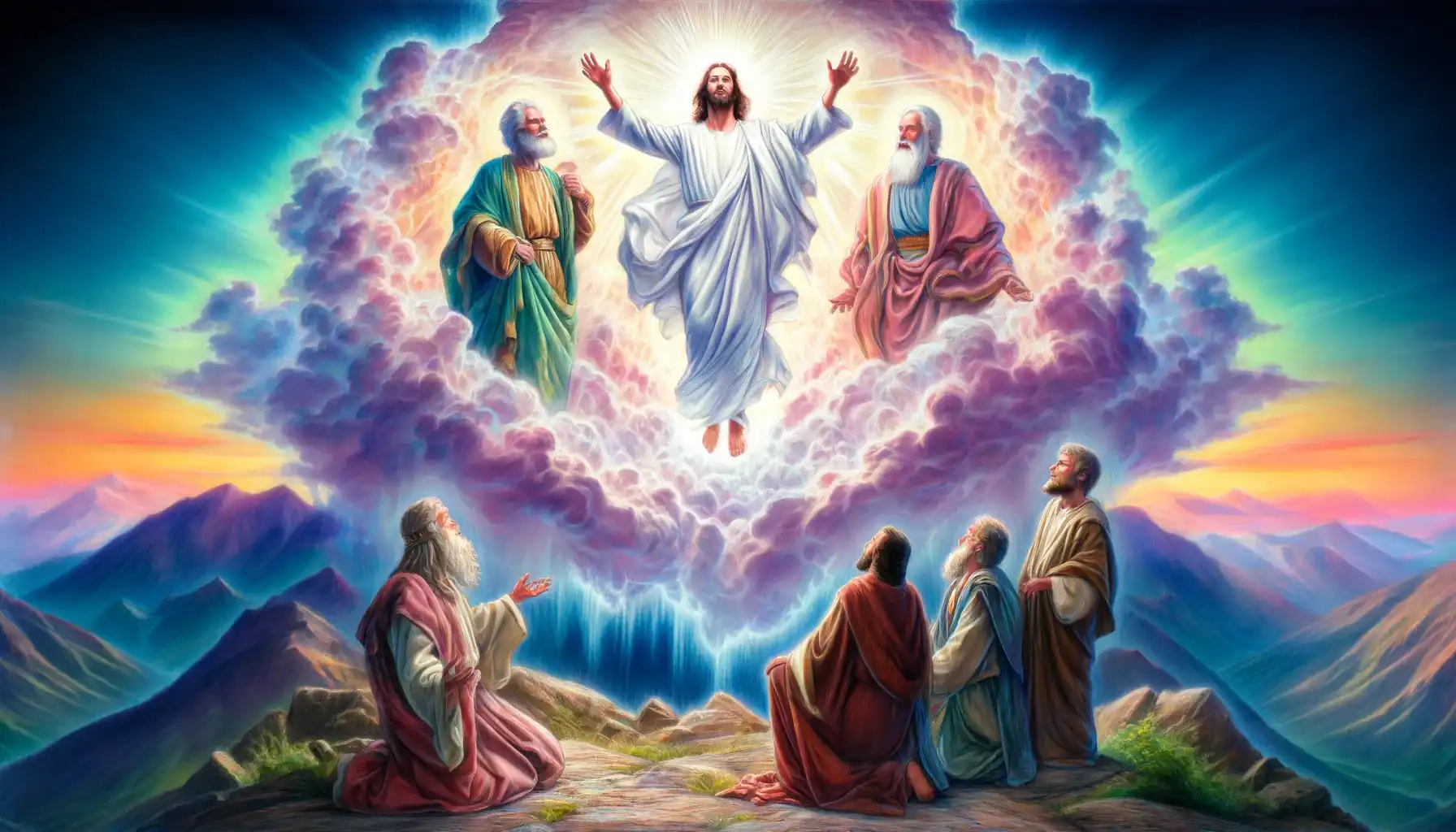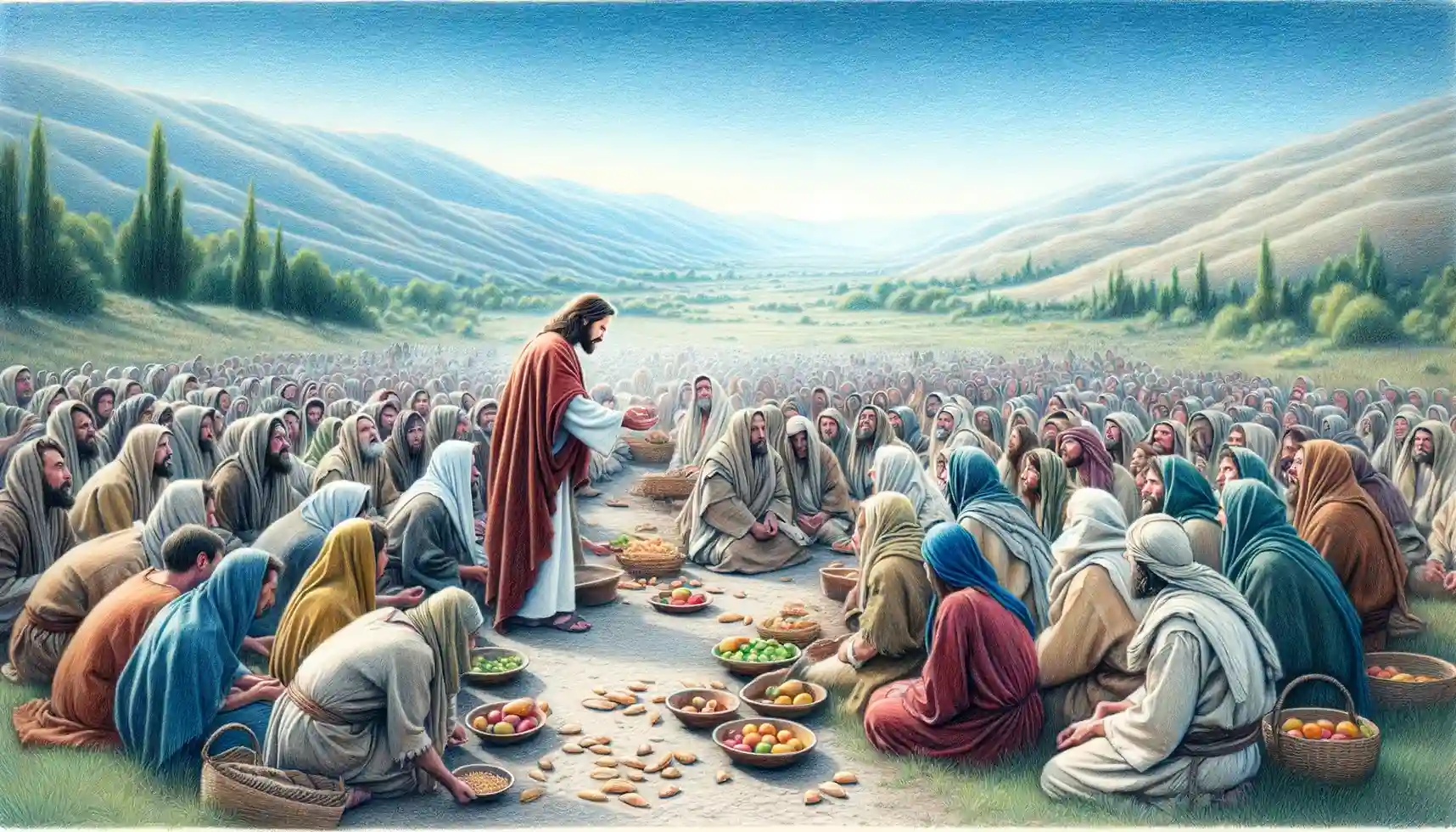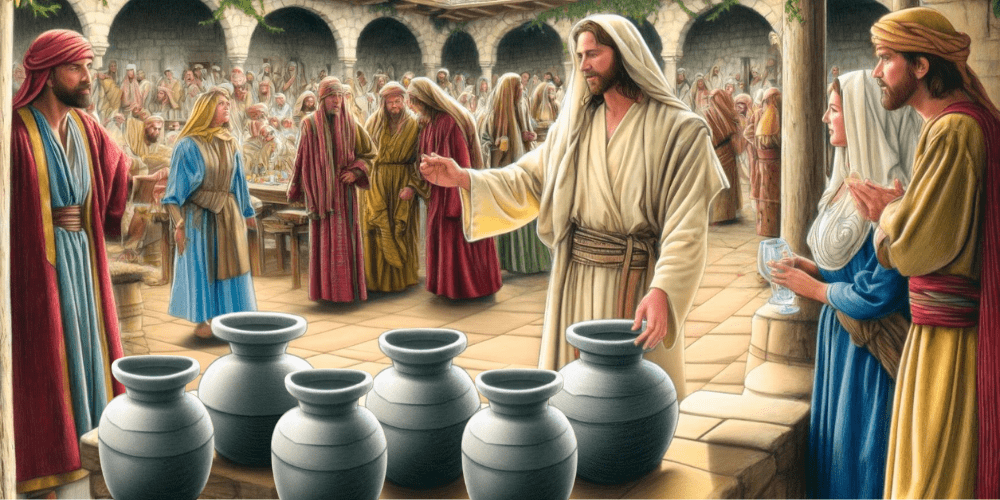In Luke 24:1-12, the Resurrection of Jesus is revealed when several women, visiting His tomb to anoint His body, find the stone rolled away and the tomb empty, an event confirmed by angels who remind them of Jesus’ prophecy about His death and resurrection, leading to a transformative discovery that initially meets skepticism from the disciples, except Peter, who investigates and marvels at the fulfillment of Jesus’ words.
The Transfiguration of Jesus is a profound revelation of His divine nature and His fulfillment of the Law and the Prophets. It reaffirms Jesus’ sonship and His mission, providing the disciples—and through the Gospel, all believers—a glimpse of His heavenly glory.
The Feeding of the 5,000, as described in Matthew 14:15-21, is a monumental miracle performed by Jesus Christ, where He compassionately feeds a massive crowd of over five thousand men, excluding women and children, with just five loaves and two fish. This miracle not only demonstrates Jesus’ supernatural ability to provide but also symbolizes His role as the spiritual sustenance for humanity, reinforcing His identity as the Bread of Life.
In the biblical story from John 2, Jesus performs His first miracle by turning water into wine at a wedding feast in Cana, Galilee, symbolizing transformation and the inauguration of the New Covenant, with His disciples, Mary, and other guests witnessing this profound event.




